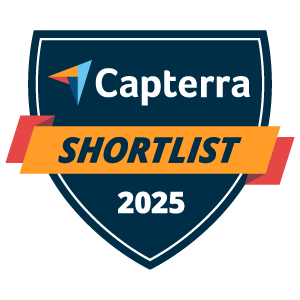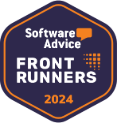17 MINS
Connecting Your Tech & Team: How to Align AI Work with Mission Goals
AI is transforming how nonprofits work, but how do we measure its true impact? In this session, we will explore a simple yet powerful approach to designing your own AI evaluation plan—ensuring it aligns with your mission, values, and goals. Through examples, we will break down key steps, essential questions, and how to bring teams together. AI should serve as a tool for meaningful progress rather than just another tech trend. This session gives you the mindset and recipe to evaluate AI with clarity and purpose.
Categories: DPCC, Expert Webcast
Connecting Your Tech & Team: How to Align AI Work with Mission Goals Transcript
Print TranscriptAn online donation form that converts a website visitor to a donor. DonorPerfect Online Forms increase conversions in several ways, such as enabling nonprofits to brand their forms, to match their website using their logo, both colors photos and Read More
An online donation form that converts a website visitor to a donor. DonorPerfect Online Forms increase conversions in several ways, such as enabling nonprofits to brand their forms, to match their website using their logo, both colors photos and videos.
This makes donors feel secure and helps build trust in the donation process. Another way to increase conversions and average gift size is with forms that provide suggested giving levels. These recommendations are also adjusted to appropriate dollar amounts for monthly giving, which is a proven donor retention strategy. Payment options like PayPal and Venmo also boost conversions by making donations quicker and easier increasing donor trust with proven safe technology. Another key to digital fundraising is a fast, automated acknowledgement process. DonorPerfect online forms allow you to customize your confirmation pages and automate receipts for immediate, personalized acknowledgement to show gratitude for every gift. Digital fundraising is an ongoing process, so to encourage donor retention, regular communication via email, social media and other digital means is crucial. DonorPerfect automates this process by ensuring all information collected flows directly into your DonorPerfect CRM transactions are organized in the appropriate donor record for additional acknowledgement, identifiable and campaign reporting and tag for inclusion in future targeted solicitations. Learn more about how DonorPerfect can meet your unique needs by speaking with your account manager or attending a product demonstration webinar.
You
with DonorPerfect, it’s easy to raise more. Our fundraising system simplifies every aspect of your work, community fundraising, organizational success, donor engagement, the giving experience and revenue growth. Nonprofits raise 25% more in their first year with us, and they don’t stop there. 93% of our clients stay with us to keep increasing their revenue and efficiency. Donor, perfect, life changing work made easy.
Third, the key to digital fundraising success is an online donation form that converts a website visitor to a donor. DonorPerfect Online Forms increase conversions in several ways, such as enabling nonprofits to brand their forms to match their website using their logo, both colors, photos and videos.
This makes donors feel secure and helps build trust in the donation process. Another way to increase conversions and average gift size is with forms that provide suggested giving levels. These recommendations are also adjusted to appropriate dollar amounts for monthly giving, which is a proven donor retention strategy. Payment options like PayPal and Venmo also boost conversions by making donations quicker and easier, increasing donor trust with proven safe technology. Another key to digital fundraising is a fast, automated acknowledgement process. DonorPerfect online forms allow you to customize your confirmation pages and automate receipts for immediate, personalized acknowledgement to show gratitude for every gift. Digital fundraising is an ongoing process. So to encourage donor retention, regular communication via email, social media and other digital means is crucial. DonorPerfect automates this process by ensuring all information collected flows directly into your DonorPerfect CRM transactions are organized in the appropriate donor record for additional acknowledgement identifiable in campaign reporting and tag for inclusion in future targeted solicitations. Learn more about how DonorPerfect can meet your unique needs by speaking with your account manager or attending a product demonstration webinar.
You
all right. Well, good morning, everyone. My name is Amanda.
Adrinski, and I’m a senior DonorPerfect Training Specialist, and I want to welcome you guys to Veena session, connecting your tech and team, how to align AI work with mission goals. Veena Das is a CEO consultant and facilitator of two practices, Namaste data and data is for everyone. Namaste data focuses on advancing data equality for nonprofits, on social impact agencies, while data is for everyone, provides tools and resources to help people learn how to navigate the world of data. Meena is a specialist in designing and teaching equitable research tools and analyzing engagement. So before I turn it over, just a few housekeeping items you can download today’s presentation from the details section to the right of the presenter view. Please submit your questions in the Q and A tab so we can address them after the session. And all sessions are being recorded and will be available on the DonorPerfect website after the conference. So with that said, Meena, I’m going to turn it over to you.
Thank you. Amanda. Hello everyone. Good morning, good afternoon. Depending on where you are joining from, we are going to talk about this is quite a wordy topic, but the one word that I’m really interested to talk about in the next 12 minutes is designing an AI evaluation plan. How do we evaluate what we are doing with artificial intelligence? Quick introduction, I am Meena Das. My pronouns are she her? I am the CEO of namaste data. Namaste data is a AI and data equity consulting practice I am joining from beautiful Vancouver, BC, Canada. So if you are here in Canada or are planning to be here, please do ping me, and you can reach out with your questions after the session today, my one goal, excuse me, my one goal in the next few minutes is to get you the recipe for for a project that I’m working on. So I one of the common projects that I work on is acting as a resident AI advisor for nonprofits and foundations, and I’m bringing to you a story from one specific organization. I’ve been working for the last nine months, and we have been developing an AI evaluation plan. This is something that doesn’t exist as much as much we would want to two things, governance and evaluation are the key pillars that we need if we want to do good with AI. So I want to give in these next 10 minutes what we did and where we are right now, and what does that plan look like. So quick slide on what is at risk if we don’t evaluate what we do with artificial intelligence, few things can happen. There is a scenario on the left hand side, and you can see the yellow in the yellow the potential outcomes if we do not have evaluation. So you’re using a tool to prioritize applicants for housing program. It can only favor applicants with stable income histories or credit scores, right? That’s unintentionally deprioritizing single mothers, immigrants, formerly incarcerated individuals, or you have another example of a volunteer management AI system that is supposed to automate the matching and communication, right like this is, these are regular products that exist out in the industry.
And the outcome of using that, if we are not careful, if we are not evaluating is that tool could frequently mismatch your volunteers and their assignments, right? And I’m going to show up few more examples. If you download this deck, you will find what is happening in the scenario and what are the potential outcomes. These yellow boxes are the actual harms that can happen, and they do happen sometimes. So we need some form of an evaluation. We need some form of an audit here to ensure if the blue boxes are matching up or not with what we intend from those solutions, if we are not landing on those yellow boxes. And so AI evaluation, the risk is not just inefficiency. It’s not about whether or not the subscription you got access to is helping you to segment something or sort something or measure something, but the biggest risk of using an AI tool without evaluation is your broken trust. Is your missed equity goals, and it’s your labor burdens that come on you, because you now just have to work with it, because you have invested X dollar amount on this product. So why not work with it somehow? Right? That’s mission drifting. And so we need some recipe. This might be just a start recipe, by the way. This is not the only this is the one way to evaluate your artificial intelligence, but you do need something to keep evaluation front and center. So I want to give an example. I do not usually put names of the organizations I work with. So here’s a quick, short example that you can use, and I’m going to show you what we actually.
Actually did in that project. So this is a mid size chapter nonprofit that started to use AI last year to identify which previous donors are most likely to respond to year end fundraising appeals. The goal was to increase the revenue while reducing staff effort and segmentation a common scenario, nothing unique, nothing unusual. What was unusual was we realized, and when I say we the organization
and I, back then, we needed an evaluation plan. It was not enough that this tech vendor company who was supporting to take on their word that now you have more donors, are now you have more X dollars raised from this product. So we needed an evaluation in house evaluation plan. And so here is what we did.
We started the deciding who should be in the room when we are talking about evaluation. So we got representation from fundraising, because obviously the use case was for fundraising of that product. We got the deep representation from the CRM team, including someone from the tech vendor company. They are accountable for what they are selling to you. After all, we got representation from community engagement. This was beautiful, because we were doing some data collection work already, and so we got some representation. They had a dei team. They still do and so we got their lead into it, and I was the resident AI advisor. So we made a good mix in the room, and we designed five to six sessions. The entire goal of that of those sessions was to talk about, starting with, how would we ensure that there is generosity in what we are doing with this product. How will we ensure that there is equity, there is efficiency? Of course, the tech company, the product, who we were using, we’re coming back with some metrics, but we needed more than that. We needed to figure out if we are truly centering humans and humanity in what is coming out of their product or not. So we had like a bunch of discussion for the police five, six sessions, before we got into metrics and any KPIs,
when we created a plan, and I’m going to show you the plan in a second, when we created a plan and we started to embed that into practice, because once you create what you are going to track, you will obviously need to do some sort of data collection, right? You would need to do some short surveys, some audits, some
some sort of data would need to be collected if you want to ensure what you are measuring and mapping. So we started to map those. We gave each other some tasks, and when I say each other within the team, who are, you know, full time staff members, and we started to collect it for almost a year, especially around the year end campaign, because the product was about the year and campaign, but we measured it about four quarter years, so September 2024
to almost April 2025,
we collected enough data around, How are people interacting with that system? How is the efficiency? How is the accuracy? What is happening around generosity? I’m going to show you the table, by the way, in a second. And then, since April, until now, for the last one and a half months, two months, we have been holding space for reflections. We have been bringing in the same group of people, but representation of other departments who haven’t been in this space, in this or the people who from the fundraising team who are not part of the original five to six sessions, and we have been holding space for reflections. What does this mean? So we got this product. This is an expensive product. We got this product for a bit of time, and now we are actually having a plan to measure it. I’m going to share this again. You have the deck so you have the links to all these resources, how we used it. But this, I’m going to come back to this slide, but this is how it looked like finally, this was the table. We had metrics like accuracy. We had metrics like equity in donor prioritization. We had metrics like generosity spirit, efficiency for fundraising staff, it is extremely, incredibly important that we don’t lay another tool on top of our fundraising staff to just somehow magically learn and start using it, but actually create some space for them to understand how to best engage with this tool. We have metrics like transparency. We have metrics like relationship impact and this framework, this AI equity framework, that I frequently talk about, is one of those things that went in. Went into those five, six sessions before we designed the plan that I just showed you. We started with the most innermost bubble of data equity, which was about what data are we collecting? How are we collecting? We went on to talk about transparency. How do we share what we are doing with this tool back with the donor community, as well as with the staff members who are using it right then we went on to ask, how do we hold ourselves accountable if something goes wrong in the way that is dim?
Finishing any of the generosity spirit, how do we hold ourselves accountable? How do we hold our tech partners accountable? And it was good of them to include the tech partners in these meetings, so everyone knew that it the accountability is not a thought after afterthought. It’s right there, front and center. And then we went on to talk about, how do you think about inclusion, and how do you build all of this into a full, big approach? So that led us to create this plan. Again, this is not your final plan. They are working on it right now. They are collecting data from different parts. You can see how we laid it out with as much detail as possible. We created metrics categories. We clarified what it measures. We explicitly added how to collect some of that data, because not it’s not just one department, one team, that is going to collect it. We added How frequently do we want to collect it? You can see there are different faith lines that are about. Some are during the campaign. Some are during the pilot phase. Some are post campaign. We added all those details, and right now, this little group who came together for building this AI evaluation plan, we are collecting this we are in this reflection phase to figure out, did this plan actually work? And to be honest, right from the post reflections that I’m hearing right now,
it worked. It was a bit of a learning curve, to be very honest, because this is not we are something we are used to. We have in the past got access to a tool and started using the tool, but now, because this is important, we cannot move do good with artificial intelligence, without evaluations or governance, we need this learning curve. So they went through this learning curve, and that’s pretty much it. We We are now working to ensure that this evaluation plan doesn’t breaks any trust, doesn’t misses any dei goals, doesn’t put more burden on our staff, and that’s what I would give to you.
Amanda, I’m going to bring you back and see if we have I know we are not doing any Q and A’s in this session, but if you have questions, please don’t hesitate to reach out outside of these sessions. Yes, absolutely. And if there’s any questions, we will get them to you Meena. So if you can always reach out and thank you for that excellent session. So thank you everyone for attending Meena session. Next up on stage one is clay buck with values over valuables, creating a donor retention plan that turns transactions into transformations. Or Sarah Tedesco from donor search with bridging tech eras, integrating AI with tried and true screening methods. No matter what session you choose, you will not miss any content, since all of our sessions are recorded and found on our DonorPerfect site after the conference. So we’ll see you guys in a few Bye. You.
Read LessRelated resources
Constituents Page
Get Year-End Ready: Your Fundraising Toolkit for Giving Tuesday Success
A Fundraiser’s Guide to Donor-Advised Funds
Get a demo





